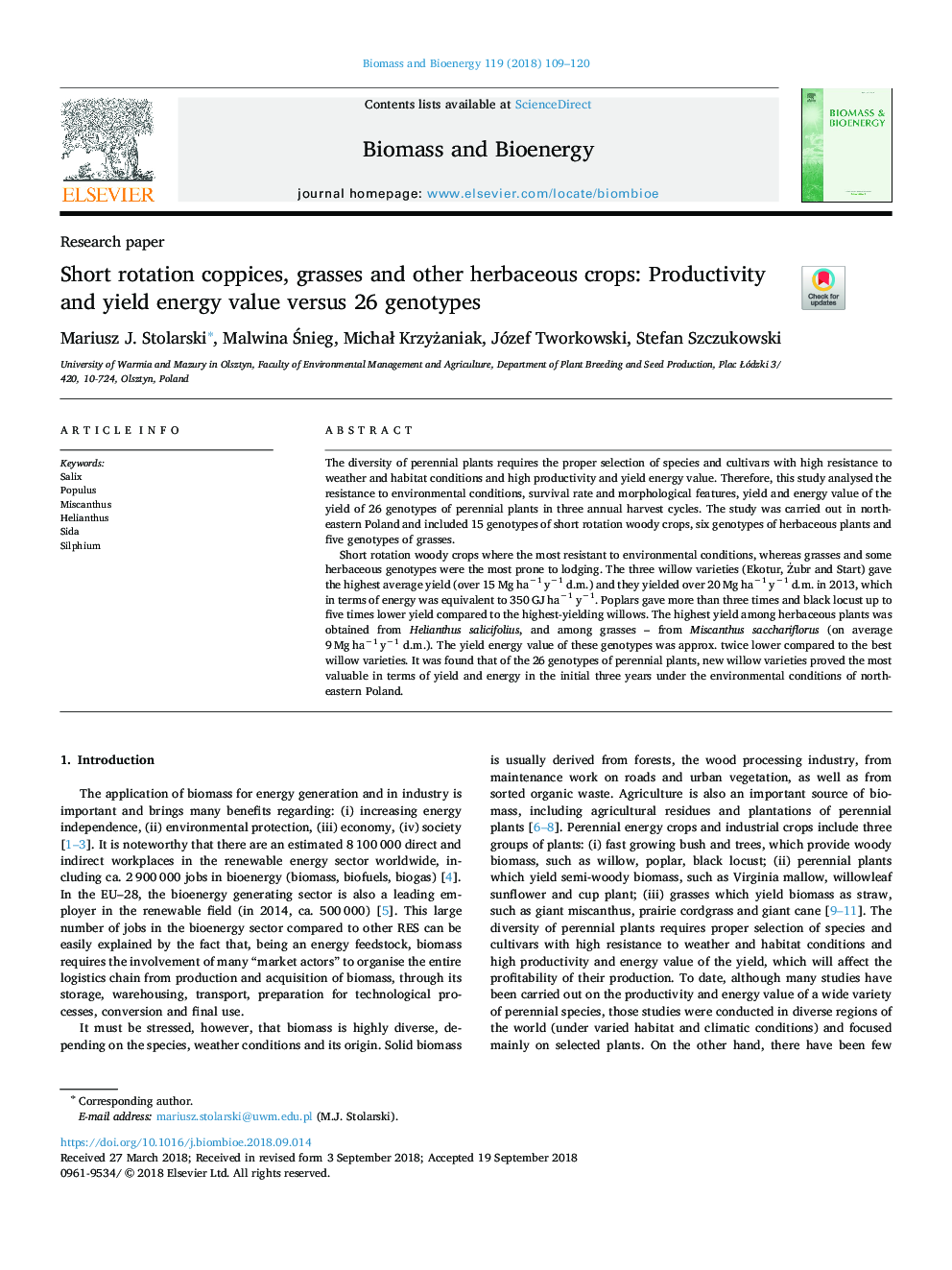| Article ID | Journal | Published Year | Pages | File Type |
|---|---|---|---|---|
| 11027904 | Biomass and Bioenergy | 2018 | 12 Pages |
Abstract
Short rotation woody crops where the most resistant to environmental conditions, whereas grasses and some herbaceous genotypes were the most prone to lodging. The three willow varieties (Ekotur, Å»ubr and Start) gave the highest average yield (over 15â¯Mgâ¯haâ1â¯yâ1 d.m.) and they yielded over 20â¯Mgâ¯haâ1â¯yâ1 d.m. in 2013, which in terms of energy was equivalent to 350â¯GJâ¯haâ1â¯yâ1. Poplars gave more than three times and black locust up to five times lower yield compared to the highest-yielding willows. The highest yield among herbaceous plants was obtained from Helianthus salicifolius, and among grasses - from Miscanthus sacchariflorus (on average 9â¯Mgâ¯haâ1â¯yâ1 d.m.). The yield energy value of these genotypes was approx. twice lower compared to the best willow varieties. It was found that of the 26 genotypes of perennial plants, new willow varieties proved the most valuable in terms of yield and energy in the initial three years under the environmental conditions of north-eastern Poland.
Keywords
Related Topics
Physical Sciences and Engineering
Chemical Engineering
Process Chemistry and Technology
Authors
Mariusz J. Stolarski, Malwina Ånieg, MichaÅ Krzyżaniak, Józef Tworkowski, Stefan Szczukowski,
